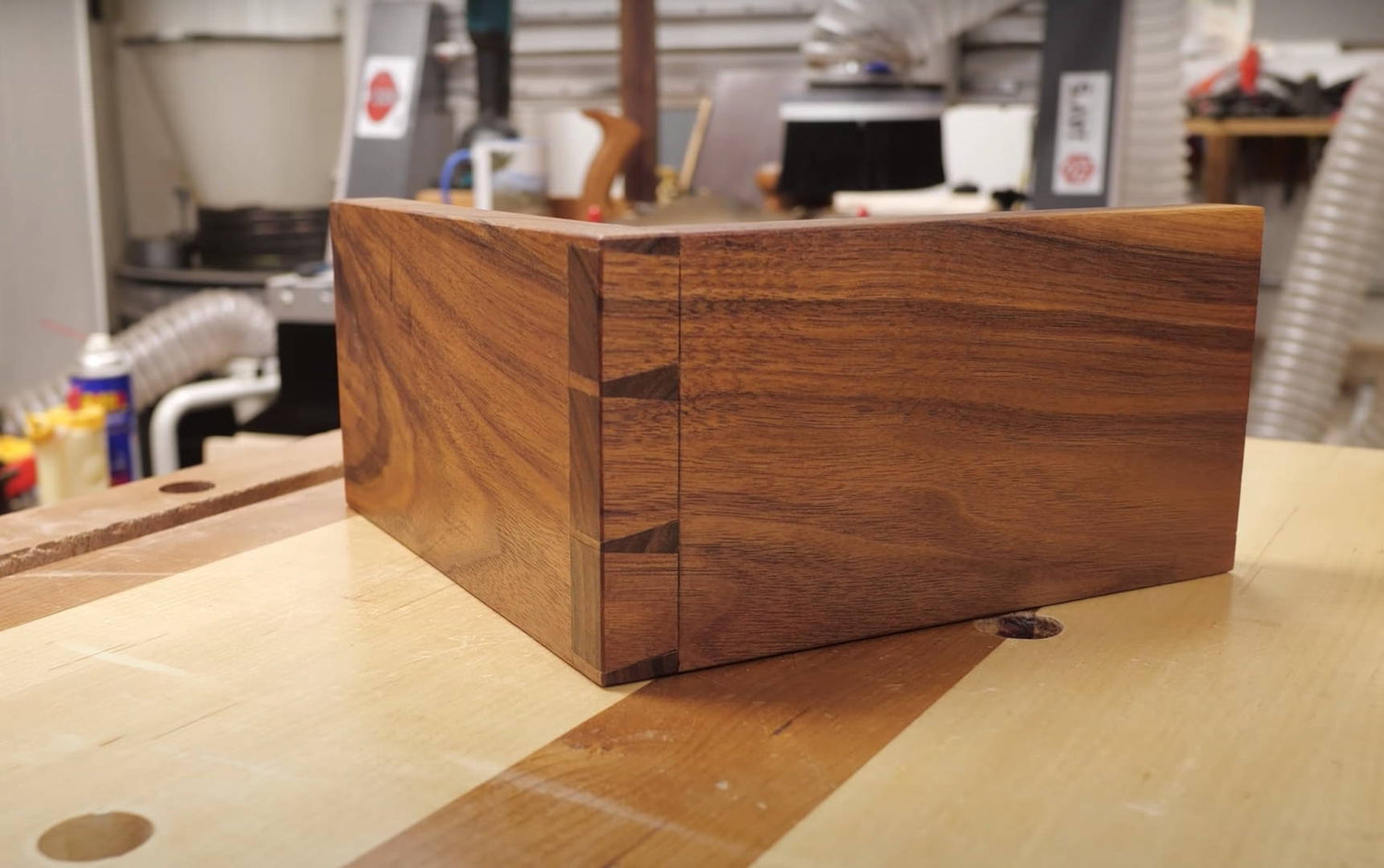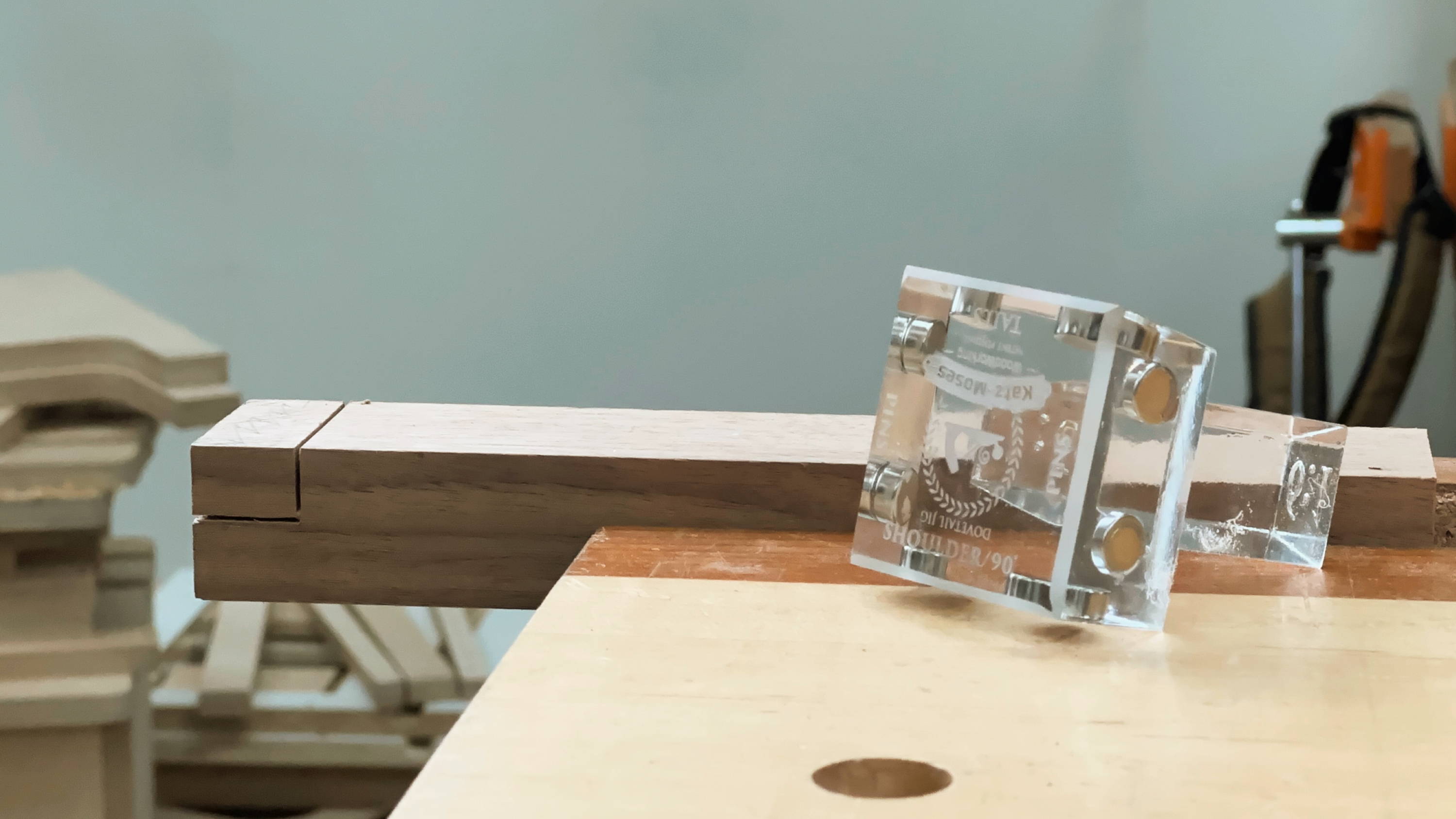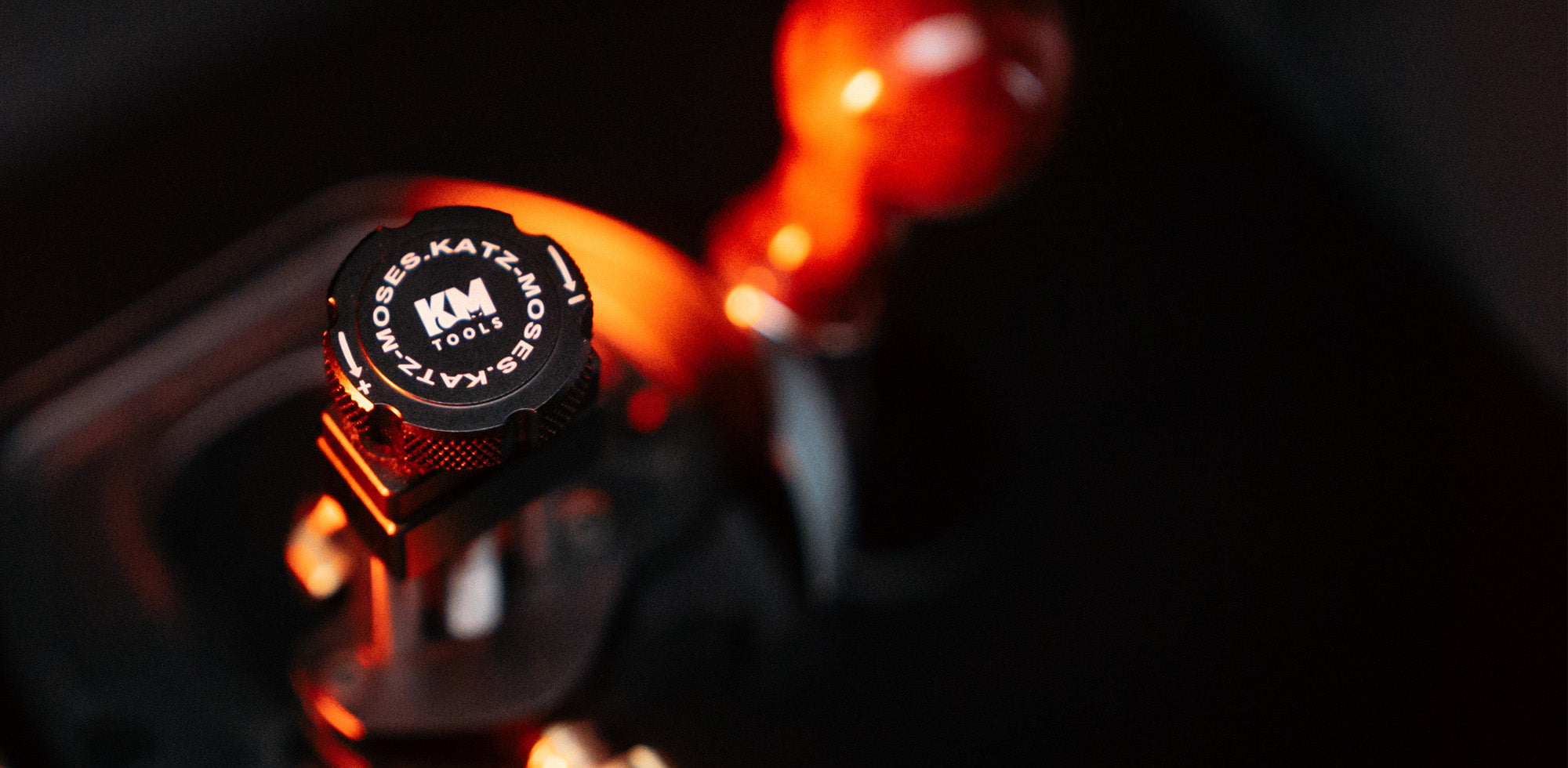For newer woodworkers, there can be a lot of mystique around dovetails. I’m here to clear that up.
Dovetail joints aren’t some incomprehensible sorcery that takes a master craftsman working under a blood moon to execute.
They’re just a really well designed joinery style. And anyone can cut them (though your first couple might look like a 5th grader before braces).
Today, I’m answering the most common questions I’ve heard about dovetails over the years.
Because once you understand the mechanics, difficulties, and applications of this joint, you might be more inclined to try cutting a set yourself.
TABLE OF CONTENTS
- How Does a Dovetail Joint Work?
- Are Dovetails the Strongest Wood Joint?
- What are Dovetail Joints Used For?
- Are Dovetails Difficult to Cut by Hand?
- What Tools Do You Need to Cut Dovetails by Hand?
- What’s the Best Dovetail Ratio or Angle?
- Should You Cut the Pins or Tails First?
- What’s the Difference Between Dovetails and Box Joints?
- Can You Cut Dovetails with Power Tools?
1. HOW DOES A DOVETAIL JOINT WORK?
Dovetails are a joinery style for connecting two boards along their edges — usually at 90°.
They’re comprised of interlocking wedge-shaped components: the tails and the pins.
To tell the difference, look at the sides of the components. The edges of the tails are square to a board’s face (and look like a dove’s tail), while the pins are angled to the board’s face (they look more like end grain trapezoids).
What’s genius about this joint is it can only come together or apart one way — with the pins sliding into the negative space between the tails.
That limitation is what gives dovetails their unique strength. More on that below.
2. ARE DOVETAILS THE STRONGEST WOOD JOINT?
The idea of the “strongest” or “best” anything is problematic when it comes to woodworking. Superlatives don’t have a place in the shop.
Modern glues are so strong that it’s kind of changed the game in terms of joint strength.
But that said, dovetails certainly are one of the strongest types of joinery to connect two boards at their edges.
Well-cut dovetails are capable of attaching boards securely without glue — or if the glue fails. And even semi-ragged dovetails have a lot of holding power.
A big part of this is the fact that the joint can only come together one way, which influences how dovetails are used in furniture (more on that in the next FAQ).
But if you want a fun semi-scientific answer, check out this Bourbon Moth video from my buddy Jason Hibbs. He tests the failing point of a bunch of joinery styles to determine the “strongest” one.
3. WHAT ARE DOVETAIL JOINTS USED FOR?
The classic use of dovetails to exploit their strength is in drawers.
Since the joint only comes apart by sliding the pins into the tails, the idea is to make the pin board the face of the drawer and the tail boards the sides.
Even if the glue fails, the drawer will hold together after repeatedly being pulled out and pushed in. The joint actively resists the pressures put on it.
The use of dovetails goes back literally thousands of years. Timber framing, cabinet and chest construction — they were even used by the ancient Egyptians.
These days, dovetails are often used as a decorative element. Because, well, they look awesome (check out some pretty sweet dovetails here).
But if you want to exploit their strength, make sure the pins board is the one resisting the most pressure.
4. ARE DOVETAILS DIFFICULT TO CUT BY HAND?
How “difficult” you consider dovetails really depends on your expectations.
If you want a joint so tight you can’t fit the tip of a knife between the pins and tails — yeah, that takes a lot of skill.
But small gaps don’t mean the joint is weak. With glue and a couple tricks of the trade, they’ll still have a ton of holding power and look great.
Don’t get me wrong. This is a relatively complex joint that takes time to fit together. But it’s absolutely within the capabilities of anyone who knows how to use a hand saw.
In my opinion, the hardest part is cutting the sides of the pins and tails accurately. Luckily, this is made a lot easier with a good dovetail jig.
Check out my 11 Tips for Cutting Your First Dovetails to give yourself a better chance at a tight-fitting joint.
5. WHAT TOOLS DO YOU NEED TO CUT DOVETAILS BY HAND?
You can cut dovetails with nothing more than a hand saw and a chisel.
Use the saw to cut the sides of the pins and tails, and the chisel to clear the waste between. A dovetail saw is best — something with crosscut teeth and a rigid back support.
But by adding a few other tools, I find it’s a lot easier to get accurate results.
Here are the tools I always have at hand when cutting dovetails:
- Marking knife
- Marking gauge
- Square
- Dividers
- Dozuki Japanese Dovetail Saw
- Katz-Moses Magnetic Dovetail Jig
- Coping saw or fret saw
- Chisels of different widths
- Chisel mallet
- Dovetail alignment board
- Hand plane
From layout to clearing waste, all these tools help make the dovetailing process a little easier.
You can of course introduce other tools into your workflow. A drill press, routers, table saw — find whatever works best for you.
Looking to get some dovetail tools? Check out our Dovetailer’s Bundles to get all the tools you need in one package.
6. WHAT’S THE BEST DOVETAIL RATIO OR ANGLE?
Again, superlatives are the worst (see what I did there?).
The dovetail ratio or dovetail angle refers to the angle of the tail and pin sides.
The ratios are derived from a simple rise over run calculation. 1:6 or 6:1 means you move 1 unit of measurement to the side from a starting point and 6 units down. The line between that end point and starting point will be the angle of your tail and pin sides.
6:1 (9.5°) and 8:1 (7.1°) dovetail ratios are the most common (though you’ll often see 4:1 and 10:1 as well).
Since 6:1 and lower dovetail ratios have a slightly wider wedge shape, they’re often used in softwoods that are more likely to compress under pressure (adding more strength)
8:1 and higher ratios have a steeper angle that works well in hardwoods, since these woods aren’t as likely to compress and don’t require as extreme of wedge.
But with modern glues, it really comes down to aesthetics. I like 8:1 dovetails because I feel they have a more “hand cut” look. Use whatever angle you like.
Matt Estlea has a great video where he goes deeper into dovetail ratios (watch it here).
And we have Katz-Moses Magnetic Dovetail Jigs available in both 6:1 and 8:1 ratios.
7. SHOULD YOU CUT THE PINS OR TAILS FIRST?
This is one of those endless woodworking debates people love to argue about.
In truth, either way works.
That said, I find cutting the tails of your dovetail joint first is easier (and I think the majority of woodworkers would agree with me).
When it comes time to trace the tails onto the pin board, you can simply lock the pin board in your vise, lay the tail board on top (a dovetail alignment board makes it easier), and trace away.
There’s no vertical balancing act, or having to mark two points and connect them.
And besides — people who cut pins first pour the milk before the cereal.
8. WHAT’S THE DIFFERENCE BETWEEN DOVETAIL JOINTS AND BOX JOINTS?
I affectionately call box joints the ugly inbred cousin of dovetails (joking, of course).
Box joints are similar to dovetails in that the edges of boards are connected by multiple interlocking cuts. The difference is that box joints are straight cuts with no angle — so there’s no wedge mechanism locking the joint together.
Therefore, box joints come together from any direction and require glue to hold together.
Does that mean that dovetails are stronger than box joints? In theory — but not necessarily.
Like I said, modern glues are so strong that there probably isn’t a huge difference (as long as the glue doesn’t fail).
The advantage of box joints is they’re quick and easy to cut with power tools and a box joint jig. But if you want to make furniture that’ll last thousands of years, maybe go with dovetails.
9. CAN YOU CUT DOVETAILS WITH POWER TOOLS?
Hand cut dovetails are fun to cut — but they’re slow… or are they?
There are a ton of ways to cut dovetail joints with power tools. The problem is these methods involve complex jigs that are either 1) expensive or 2) take a long time to set up.
I’m a huge fan of power tools. I even own a Dovetail Jig that’s meant to be used with an electric router.
But with enough practice (and the right expectations), hand cut dovetails can actually be more efficient.
Obviously, the equation is different if you work in a production shop vs do woodworking as a hobby. So figure out what works best for you — and do whatever the heck you want.
My friend Tamar Hannah of 3x3 Custom has a video where she shows how to make a pretty ingenious dovetail jig for the table saw. Definitely worth a watch.
TAKE THE DOUBT OUT OF DOVETAILS
Hopefully, the answers above clear away any mystery around dovetails.
People make a big deal out of this joinery style.
But if you get yourself in the shop and just cut a set, you’ll find they’re not as big of a deal as they seem.
Want to learn the basics of cutting a dovetail joint? Check out my blog a 10 Step Guide to Through Dovetails.
What other questions do you have about dovetails? Ask away in the comments below!
Follow us on Instagram @katzmosestools, on TikTok @katzmoseswoodworking, and check out my YouTube channel for more great woodworking content...
And as always, STAY SAFE IN THE SHOP!











